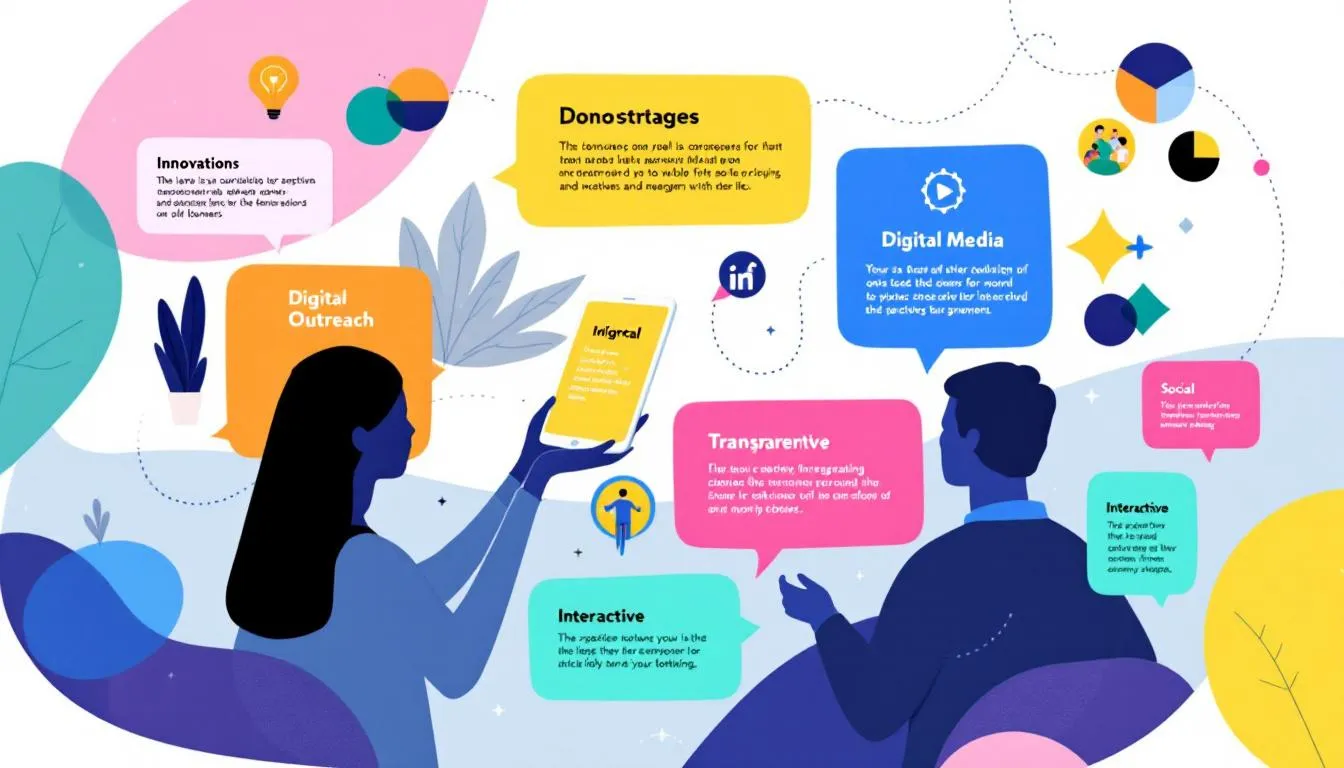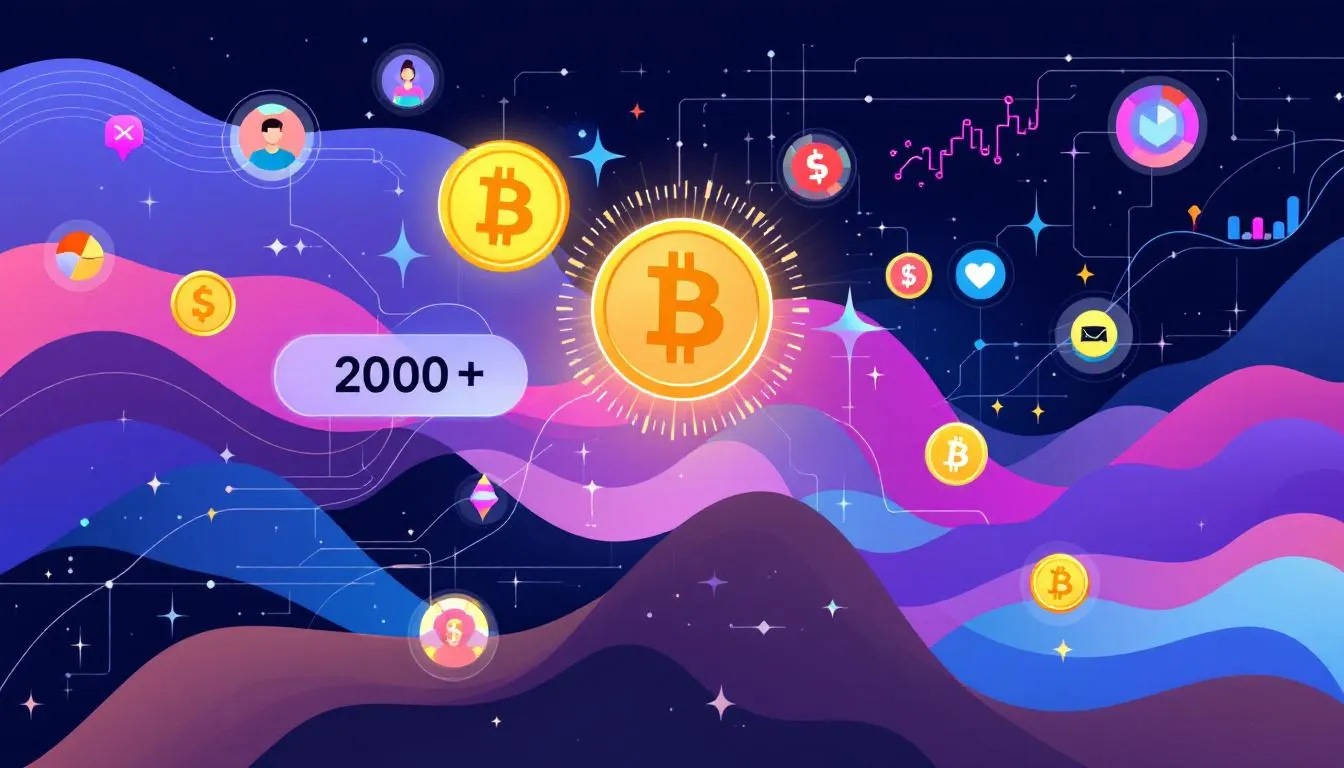How Millennials and Gen Z are Redefining Nonprofit Giving: Key Trends and Strategies
Melanie Kirton | Aug 01 2025 18:00
Curious about how millennials and Gen Z are redefining nonprofit giving? These younger generations leverage technology, demand transparency, and champion social and environmental causes to reshape philanthropy. Read on to discover key trends and strategies that nonprofits need to adopt to stay relevant and engage effectively with these dynamic donors.
The Rise of Digital Giving

Digital giving is transforming how donations are made and received in today’s technological era. For Millennials and Gen Z, digital platforms provide a more accessible, transparent, and engaging experience for charitable giving. These platforms lower entry barriers, simplifying support for causes young donors care about. Crowdfunding, mobile payments, and social media campaigns offer various ways to engage donors and amplify their impact.
Technology greatly influences the charitable practices of younger generations. Millennials primarily use mobile devices for online donations, enhancing convenience and accessibility. Smartphones are integral as Millennials and Gen Z donate to causes they care about.
Nonprofits use tools like social media campaigns and crowdfunding platforms to engage donors and enhance philanthropic efforts. These digital strategies attract new donors and retain existing ones by offering a seamless and engaging giving experience.
Many nonprofits are now expanding their digital giving options to include non-cash asset donations, which can help boost donation revenue and appeal to younger, tech-savvy donors.
Online Fundraising Platforms
Crowdfunding is increasingly popular among younger donors, enabling direct and collective financial support for causes. Key aspects include:
- Platforms like GoFundMe empower them to make a collective impact.
- Attractive website design significantly influences their decision-making.
- Mobile optimization is crucial for engaging younger donors. Therefore, it is important for nonprofits to invest in user-friendly online platforms.
Nonprofits enhance engagement with young donors through effective use of crowdfunding technology. Providing a platform where young philanthropists see the immediate impact of their contributions fosters a sense of community and shared purpose among donors.
Mobile Payment Options
Younger donors prefer platforms like Venmo and Apple Pay for convenient donations. Adapting nonprofit websites for mobile users is crucial to enhance donation experiences.
Integrating online giving tools with mobile payment solutions facilitates a seamless online experience, encouraging young donors to contribute.
Social Media Campaigns
Effective social media campaigns involve visually engaging narratives that resonate with younger audiences. Utilizing diverse social media channels maintains donor interest and attention.
Employing a variety of communication channels in multiple ways ensures nonprofits reach donors where they are most active, maximizing engagement and impact.
Emphasis on Transparency and Accountability
Transparency and accountability are foundational for younger donors. They demand transparency to ensure effective use of their donations and expect nonprofits to demonstrate authenticity and tangible outcomes. Open communication and accountability build donor confidence, making it crucial for organizations to commit to honest reporting and financial metrics. Meeting the expectations of current donors for transparency and accountability is essential for ongoing support and helps position organizations for future donations.
Nonprofits show commitment to accountability by requesting feedback from donors and beneficiaries, reflecting an ongoing dialogue that resonates with Millennial and Gen Z values. Young donors look for nonprofit organizations that reflect their values and embrace transparency and authenticity. They prioritize understanding how their donations are spent, utilizing technology to ensure alignment with their expectations.
Financial Transparency
Millennials and Gen Z prioritize transparency in donation allocation. They want to see public financial statements and annual reports to assess fund allocation.
To build trust, nonprofits must clearly communicate how funds are used and the outcomes of their work, ensuring contributions lead to real change.
Impact Reporting
Frequent reporting helps donors visualize and understand the impact of their contributions. Transparency is crucial for millennial donors as it builds trust and ensures their donations make a tangible difference, keeping the impact top of mind.
Sharing success stories significantly enhances younger donor engagement by demonstrating the impact of their contributions.
Authentic Communication
Younger donors want to hear authentic voices from those served by the charity. Millennials and Gen Z respond better to genuine stories reflecting real experiences of those impacted by nonprofit efforts.
Nonprofits should refine strategies to respond to donor suggestions, enhancing communication authenticity.
Prioritizing Social and Environmental Causes

Younger generations prioritize philanthropic initiatives focusing on sustainability, social justice, and positive climate impacts. The causes that drive younger donors are deeply related to social equity, sustainability, and systemic change. Millennials and Gen Z seek to create measurable outcomes and lasting change through their philanthropy. Younger donors are especially interested in seeing how their contributions directly support the organization's goals and drive progress toward those objectives.
Their commitment to addressing social and environmental issues is reflected in their support for charitable causes like renewable energy, conservation, equity initiatives, education programs, and mental health access. Younger wealthy donors show a strong inclination toward supporting causes such as homelessness, climate change, and the advancement of women and girls.
Climate Change and Sustainability
Millennials support projects enhancing ecological balance and sustainability practices. Millennials and Gen Z prioritize environmental issues as a crucial aspect of their philanthropic values.
The strong focus on environmental sustainability indicates that nonprofits must adapt strategies to align with the organization’s goals.
Social Justice Initiatives
Key social issues for Millennials include systemic racism, promoting equity, and access to education. Engagement in social justice movements is a primary driver when selecting causes to support.
Younger generations, particularly millennials and gen z donors, increasingly focus on social justice issues in their next generation philanthropic efforts as holistic social change agents.
Mental Health and Education
Young philanthropists prioritize mental health access and education equity, making equitable access to education and mental health services a top priority for them through philanthropic solutions.
Engaging Younger Donors Through Community Involvement

Younger generations prioritize direct action engagement with social issues over traditional nonprofit structures. More than two thirds of younger donors prefer to contribute time rather than money, showing a strong inclination toward hands-on involvement with causes they care about within their age group.
The social circle of younger donors often plays a significant role in motivating their involvement, as peer networks and activism can drive charitable participation and support.
Virtual reality experiences create immersive engagement, enhancing donor connection to causes.
Volunteering Opportunities
Millennials and Gen Z strongly incline toward volunteering to engage with causes they care about. Nonprofits can attract these donors by offering diverse volunteering opportunities that align with their values and interests.
The majority of Millennials and Gen Z are inclined to volunteer despite financial constraints, indicating a preference for hands-on participation.
Peer-to-Peer Fundraising
Peer-to-peer fundraising allows donors to leverage their social networks, enhancing the impact of their contributions. Younger donors are more likely to create fundraisers during significant personal events like birthdays. A reliable peer-to-peer platform encourages donors to become more invested in a cause.
Events and Experiences
Hosting events and creating interactive experiences effectively engage younger audiences and develop meaningful connections. Offering diverse volunteering opportunities allows Millennials and Gen Z to engage hands-on, increasing their commitment to the cause.
Personalized and Innovative Communication Strategies
Young donors prefer quick, impactful messaging that resonates with their interests. Interactive and engaging communication methods that allow for two-way conversations are highly effective. These strategies are particularly important for reaching potential donors, who are more likely to engage when they see organizational values and actions align with their own ideals. Nonprofits can make thank-you pages more engaging by personalizing them with the donor’s name and including impactful visuals about the gift’s effects.
Innovative, low-cost methods for thanking younger donors, such as personal phone calls or engaging thank-you pages, enhance donor relations.
Data-Driven Personalization
Effective donor personalization begins with comprehensive data points collection that includes giving patterns and preferred communication methods. Using data to tailor messages enhances donor engagement and donor retention.
Leveraging data-driven personalization, nonprofits can significantly improve their lasting connections and meaningful relationships with younger donors, leading to increased support and loyalty.
Storytelling Techniques
Storytelling is essential for galvanizing an emotional connection with Millennial donors. Emotional connections through storytelling significantly sway younger donors’ decisions. Organizations should share success stories and personalized features to communicate effectively with donors.
Nonprofits should use emails, social media, and blogs to engage donors by sharing stories.
Multi-Platform Outreach
Multi-platform outreach strategies enhance donor engagement by keeping Millennials and Gen Z interested. Social media platforms like Instagram, TikTok, X, and Facebook effectively reach younger generations. Nonprofits can personalize communications by customizing outreach using donor data such as name, city, age, and prior donations.
Personalizing communications increases email open rates and fosters deeper connections with donors.
Adapting Nonprofit Structures for Young Donor Engagement

Younger generations want more public attention for their giving. Millennials expect tailored communication specific to their interests and goals from nonprofits. Nonprofits can create a more inclusive board for younger generations by examining barriers and considering non-traditional policies.
Family foundations are a common vehicle for multi-generational philanthropy, helping to pass on charitable values and wealth. Engaging both current and future generations through these structures is increasingly important.
Young ambassadors can serve on nonprofit boards in formal capacities to enhance engagement. Younger generations are more likely to embrace cryptocurrency donations due to its alignment with their tech-savvy lifestyles. Nonprofits can enhance cryptocurrency strategies by creating user-friendly platforms for donations.
Inclusive Governance
Engaging young donors in leadership roles through initiatives like junior boards fosters a sense of ownership and commitment. Creating diverse boards that include younger generations can improve engagement and align nonprofit goals with new donors’ values.
Inclusive governance is essential in today’s nonprofit sector, particularly to engage young donors who value participation.
Flexible Giving Options
Offering various donation methods caters to tech-savvy young donors’ preferences and includes:
- Stocks
- Cryptocurrencies
- In-kind donations
- Donor advised funds (DAF) donations
Donating non-cash assets is highly charitable and tax-efficient. Nonprofits can accept these alternative charitable donations to diversify their donation options.
Nonprofits should provide an easy way to choose assets for donation to enhance the experience for young donors.
Recognition and Appreciation
Younger donors appreciate personalized recognition and acknowledgment of their contributions to strengthen loyalty. Personalized thank-you messages can enhance donor loyalty and encourage future contributions. Nonprofits can creatively thank younger donors by coordinating thank-you calls from staff.
Public recognition of monetary contributions is crucial for engaging younger donors and securing financial contributions.
Understanding the Differences Between Millennials and Gen Z
If you're working with donors, you've probably noticed that Millennials and Gen Z get lumped together as "younger donors," but here's what you need to know: each generation brings its own distinct perspective to charitable giving that can transform your fundraising approach. When you're connecting with Millennials—those born between 1981 and 1996—you're engaging with donors who are naturally tech-savvy, deeply passionate about diversity, and absolutely committed to social justice. These supporters will gravitate toward your organization when you demonstrate genuine transparency and show them how their contributions drive the systemic change they're eager to see through meaningful relationships and authentic community involvement.
Now, Gen Z donors—born between 1997 and 2012—are emerging as a refreshingly pragmatic and entrepreneurial group that you'll want to understand. This generation will surprise you with their laser focus on mental health, sustainability, and direct action that creates real impact. As true digital natives, these donors expect seamless online experiences from your organization, and they'll quickly rally behind causes that mirror their values, particularly when you're addressing climate change and comprehensive social change that speaks to their vision of the future.
Understanding these generational differences isn't just helpful—it's essential for developing outreach strategies and philanthropic efforts that actually work. You'll find that Millennials respond beautifully to campaigns that spotlight social justice and demonstrate clear community impact, while Gen Z will be drawn to your innovative, tech-driven approaches that deliver tangible, measurable outcomes. When you recognize and genuinely respect the distinct priorities of both millennials and gen z, you're positioning your nonprofit organization to build those meaningful relationships that matter, engage donors in authentic ways that create lasting connections, and ensure your mission truly resonates with the next generation of supporters who will champion your cause.
The Role of Donor Advised Funds in Nonprofit Giving
If you're looking to transform your charitable giving strategy, Donor Advised Funds (DAFs) might be exactly what you need—and they're becoming incredibly popular among donors of all ages, from tech-savvy millennials to seasoned baby boomers. Here's how they work: you contribute your assets—whether that's cash, stocks, or even real estate—into your own dedicated charitable fund, and you get those immediate tax benefits while gaining the flexibility to recommend grants to your favorite nonprofit organizations whenever you're ready.
As a donor, you'll find that DAFs offer you a streamlined, strategic approach to support multiple causes while maximizing every dollar of your philanthropic impact. This is especially powerful if you're new to major giving or you want to make larger, more thoughtful contributions that truly matter. And if you're running a nonprofit, here's where it gets exciting—you can proactively build relationships with DAF donors and their financial advisors, provide educational resources about DAF advantages, and make it incredibly easy for these donors to direct their support your way.
When you embrace donor advised funds in your nonprofit strategy, you're not just diversifying your funding—you're positioning yourself to attract younger generations, increase your average donation sizes, and build those meaningful long-term partnerships that every organization dreams of. By engaging thoughtfully with DAF donors, you'll not only expand your funding streams but also develop the kind of authentic connections with current and future major donors that can transform your organization's impact for years to come.
Resources and Support for Nonprofits
If you're looking to successfully engage younger donors and adapt to the ever-changing landscape of charitable giving, you'll need access to robust resources and expert support—and trust me, you're not alone in feeling overwhelmed by this challenge. Here's the good news: financial institutions like America Private Bank are here to help with philanthropic solutions, including donor advised funds, that can help you connect with wealthy millennials, baby boomers, and other key donor segments. These solutions will empower you to build meaningful relationships, streamline your giving processes, and truly enhance how you engage with your donors.
Beyond financial partners, you can leverage online platforms, social media campaigns, and partnerships with fundraising organizations to expand your reach and promote your causes to a wider audience—and yes, you absolutely have the capability to master these tools! Organizations such as Foundation Source provide invaluable education, research, and consulting services that will empower you to develop effective outreach strategies, build those meaningful connections with donors you've been seeking, and achieve the long-term success your organization deserves.
By utilizing these resources and support systems, you can confidently stay ahead of changing donor behaviors, strengthen your philanthropic efforts, and create that lasting impact in your communities that drives your mission forward. When you invest in the right tools and partnerships, you're ensuring that your nonprofit remains not just relevant but resilient as you engage the next generation of donors—and that's something you should feel confident about achieving.
Future Trends in Nonprofit Giving

Nonprofits must prepare for a significant great wealth transfer to younger generations, with millennials and gen z becoming increasingly influential in redefining philanthropy. Generation Z, in particular, is known for its digital-first mindset, strong social justice values, and desire for recognition, which shape their philanthropic behavior and engagement with organizations.
Technology changes, cultural values, and emerging perspectives of next-gen donors fuel changes in philanthropy, presenting the next challenge for organizations. Unlike previous generations who often focused on traditional giving, Millennials and Generation Z emphasize global collaboration, use of technology, and a drive for systemic change in their approach to philanthropy.
A significant portion of future donations is expected to come from crypto, driven by younger generations’ growing acceptance of digital currencies. Young people will continue to shape the future of nonprofit giving, making it essential for organizations to understand and engage this demographic.
Cryptocurrency Donations
Cryptocurrency donations offer benefits such as transparency, a decentralized nature, and rapid borderless transactions. Challenges of cryptocurrency donations include price volatility and the need for secure systems.
To adapt to cryptocurrency giving, nonprofits should understand digital currencies and align with platforms that facilitate easy donations.
Impact Investing
Impact investing is defined as combining financial returns with social expectations, driving impactful change. Millennials are prioritizing investments that align with their interests. This includes areas like affordable housing and sustainable agriculture.
Nonprofits can benefit from impact investors by engaging in strategic alliances to multiply their work and win support, creating a positive impact.
Virtual Reality Fundraising
Offering VR fundraising events can attract tech-oriented younger donors who seek innovative giving experiences.
